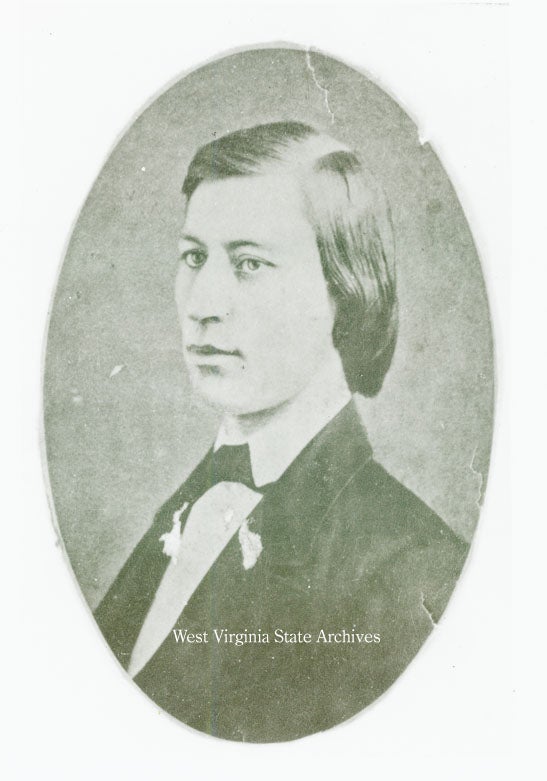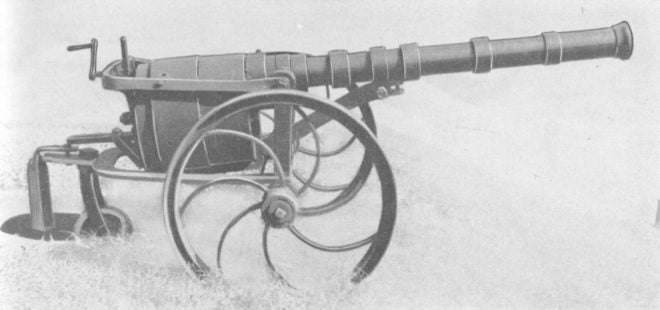Need a Big Bore Revolver? Henry Pate’s got you covered.
By the time the American Civil War broke out, Henry Clay Pate already had some combat experience from the 1850s. Pate, a U.S. Marshal and staunch slavery supporter, had participated in the attack on Lawrence, Kansas, and had tangled with and been beaten by John Brown at The Battle of Black Jack in Kansas as well.
Like many veterans of such skirmishes, as well as mounted units in the Mexican-American war, Pate’s fighting experience with revolvers must have made an impression on him. Upon the outbreak of the Civil War, Pate formed a mounted unit (Pate’s Rangers), and commissioned the Peterson, VA firm of Tappey and Lundsen to manufacture a monstrous, oversized 3.13-inch (313 caliber) revolver, the “Pate Revolving Cannon”.

Henry Clay Pate, Designer of the Pate Revolving Cannon. Image Credit: West Virginia State Archives
20 Pounds of lead
Each ball for the revolving cannon weighed 4lbs or 28000gr! The cannon was as close to a scaled-up percussion revolver as one could get. It utilized a 5-shot cylinder, a striker that would impact a percussion cap, and, to improve velocity and safety by reducing gas leakage, was also a gas-sealed design! One could seal the cylinder to the barrel via the usage of a screw lever. A separate lever would rotate the cylinder, which was held in place for firing via a hefty spring-loaded mechanism.
According to the Petersburg Express of May 11, 1861, two such cannons were made, with one bursting apart during testing. The maximum range of the cannon was 1900 yards, and it was mounted on a two-wheeled caisson with an integrated elevation adjustment mechanism. The cannon was more than manageable for cavalry use, weighing a svelte (for artillery) 300 lbs.
Combat and Capture
Though innovative, the Pate revolving cannon did not make a large impression on the leadership of the Confederacy, at least not enough to pursue further. Neither Thomas Rosser nor James “Jeb” Stuart (both of whom Pate served under) seem to have made much mention or recommendation of the device. This may have been due to its ineffectiveness as a weapon, or due to Pate’s irascible insubordinate nature, which earned him a court-martial from Rosser.
The revolving cannon’s most notable combat usage during the war was in the fighting around Petersburg and Richmond, VA in 1864-5. Pate was killed in cavalry combat at the Battle of Yellow Tavern in May of 1864. The cannon itself was captured in Danville on the southern border of Virginia in April of 1865 and was sent to West Point for analysis.
While today the Pate Revolving Cannon is just a footnote in the early attempts at rapid fire artillery, it truly was a Civil War mega-revolver.
 Your Privacy Choices
Your Privacy Choices
